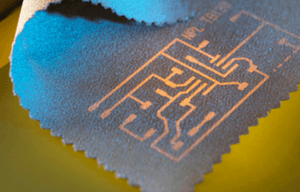In January 1993, the world changed. That was when Mosaic, the first graphic “browser”, was released.
Back then, a colleague got a call in his office in North Sydney from a friend who had been at Apple in Cupertino USA during the first Steve Jobs era.
He told him he had to download it immediately because it was going to change everything.
He did and it turned out that his friend was true to his word.
It is easy to think of all that content as a treasure trove of riches with the shift to browsing leading to more fortunes being made by companies and people than anything that has preceded it.
And yet this is only like looking through a keyhole at the potential.
The next stage of our digitized universe – the Internet of Things – is industrial and much bigger.
The Internet of Things (IoT) has been building momentum for several years now.
The big consulting firms have established teams of scientists, engineers, finance people, all working on developing ways to leverage its transformational potential for their clients.
They have charted the growth of the Internet of Things as growing at twice the speed of the Internet that we know and use every day.
GE has put its money where its mouth is too, re-positioning to deliver an IoT platform to the market, with Predix.
Why is the Internet of Things so important?
The Internet is about connecting the 7 Billion people on the planet.
The IoT is about connecting the almost infinite number of devices and objects that serve those 7 Billion people.
Forget the concept of your fridge telling you when you need to replace the milk.
Think instead about the infrastructure that enables humanity to exist.
Simply and at its most fundamental level it’s all about sensors with GPS collecting useful information from “things” and acting on the data.
Like so many things in life where technology is involved, the reality is much more complex than the concept.
How many sensors do you need to get enough information to achieve valuable insights? And how much energy will those sensors need in order to function? And how much will the sensors cost? And will the sensors materially change the things that they are attached to?
This is NOT science fiction. It is being achieved by engineers and scientists right now, not in a research lab at a university, but by industry.
It involves understanding and using the molecular structure of graphene and in particular its extraordinary conductivity.
Not only can minute changes in conductivity be measured and communicated, but the location of the change can also be tracked and then communicated into the cloud.
This technology has huge potential in civil engineering infrastructure, mining and agriculture which, as predicted by McKinsey are where early adoption of the Internet of Things will take place.
Miners will be able to monitor the stability of underground walls and tailings dams to get early warning signals of instability. Water pipes will be able to communicate that they are leaking.
Roads will report on when there is wear and tear. Equipment will tell operators that maintenance is required. Not because there are thousands of sensors intermittently distributed in systems but because they have become one giant intelligent communicating sensor.
They will require less energy than distributing microchips everywhere, cost less, be easier to install, and will mean that the promise of “smart” cities and “smart” buildings and “smart” everything will be achieved faster.
You won’t see the Internet of Industrial Materials developing.
But then none of us “see” the internet as while we all get the benefit of being able to access all the information in the world at the touch of a button on our smart phone.
The Internet of Industrial Materials will be less visible still. And all the while, as McKinsey has projected, will be making an US$11 Trillion global economic impact.

